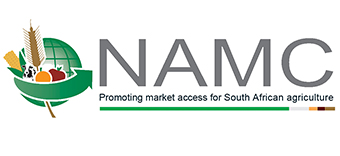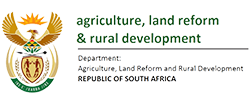CEO’s Desk – October 2020

One of the objectives of the NAMC’s founding legislation, the Marketing of Agricultural Products (MAP) Act, is “the increasing of market access for all market participants.” The NAMC is therefore legislatively entrusted with, among other things, the provision of advisory services to the Minister on how this and other three objectives of the MAP Act may be promoted[1]. Such advice to the shareholder Minister must be done “in relation to national economic, social and developmental policies and international trends and developments[2]. That is why the NAMC has invested in building agricultural economic research and analytical capacity to enable it to perform its mandate based on rigorous scientific and analytical grounding. The four core divisions of the NAMC are endowed with economists with extensive knowledge of the agricultural sector. They undertake research on local and international economic and market trends and practical developments in the sector, analyse relevant data and generate knowledge to be used to advise the Minister in policy making and to assist decision makers in the sector to make investment and business decisions. Some of the knowledge generated through research is used by internal economists to design programmes to increase market access for all market participants.
The programmes designed by the Agribusiness Development division to link farmers to markets is bearing good fruit. As at the end of September, the NAMC linked 379 farmers with a market to supply dry beans during the 2020/2021 season. The farmers are located at Nkomazi, Umjindi, and Mbombela at Ehlanzeni in Mpumalanga Province. The number of hectares identified is 1 376, of which 509 is allocated for dry beans production. The statistics of farmers are as follows adult (359) as compared to youth (20), Male (257) and females 122. Two new concepts were developed for the identified commodities (Vegetables in Limpopo and Rabbits in KwaZulu-Natal) to inform the design of the market access/development scheme. The concepts will benefit 8 farmers that are operating on 45 hectares of privately owned land, of which 20 ha has been allocated to rabbit farming. The farmers are located in Boston area, from IMpendle Local Municipality which falls under uMgungundlovu District Municipality in the KwaZulu Natal province. In Limpopo the concept will benefit 36 farmers who are producing peppers, sweet potatoes, cabbages, chillies, tomatoes, butternut and night shade.
The NAMC in collaboration with the Free State Department of Agriculture, Rural Development and Land Reform, assisted a group of 21 smallholder farmers from the various areas within the Fezile Dabi District Municipality in the Free State Province with technical support in hydroponics. The farmers are operating on communal land which is approximately 150 hectares in total. Initially, the NAMC team conducted a diagnostic analysis study with the farmers followed by production of a technical support plan. The NAMC will further assist in linking them with the formal local markets for their commodities.
The NAMC recently finalised its 2020 survey on the status of statutory measures. One of the purposes of this survey is to compile a summary of all statutory measures applicable in South African agricultural sector and is based on the latest audited financial statements of all the statutory levy administrators. The total funds collected through statutory levies by levy administrators in the 2020 survey amounted to approximately R735.8 million, which is 14.8% higher than the previous survey’s reported levy income of approximately R641.2 million. This increase can, amongst others, be attributed to the soybean breeding levy income of approximately R69.0 million, implemented in March 2019, that is reported on for the first time in this survey. The 2020 survey also shows that approximately R658.7 million was spent on industry functions – an increase of 7.1% compared to the R614.8 million spent in the 2019 survey. Of the total expenditure, approximately 37.1% was spent on research, 11.9% on export promotion/market access, and 11.2% on information. Approximately 18.9% (R124.4 million) was spent on transformation projects. If the transformation funds allocated by the SA Cultivar and Technology Agency (SACTA) (soybeans and winter cereals), but not yet spent, is taken into account, the expenditure on transformation would have been 24.6% of total levy expenditure.
The world financial situation is not in the best shape following the closures that countries with the biggest world stock exchanges had experienced. The associated business closures or reductions in their operations to meet the COVID-19 social distancing requirement has affected businesses negatively. This implies the investment portfolios of the different trusts have not performed as they would under ordinary circumstances. The gives an indication of the added complexity to the Board of Trustees to raise enough funds to cater for industry matters going forward. The same can be said to the trust that own physical properties as the rental demands or payment capabilities of existing clients were negatively affected. The agricultural industry trusts had to adjust to the new normal and held their meetings through virtual means. The industry activities are now starting to pick following the relaxation of the restrictions.
FANRPAN held, through virtual means, its annual regional dialogue in the month of October and it went well with over three hundred participants having joined the deliberations. It is important to note that this was the first of its kind, virtual component of the dialogue. The work that is done on the climate change modelling work continued with a workshop that consolidated the scenarios with active participation of the Agricultural Research Council (ARC). Work on the transformation front is gaining ground in the dairy industry, with contacts being made for Milk SA to link with farmers in Provinces where its footprint is low. The work of mohair in ensuring that South Africa’s mohair is registered under responsible mohair standards is going well with two black farms having passed the audit. The auditing process is on-going to about nine black farms. The working relations between Mohair South Africa and government on skills development is going well with students having been seconded to the big cooperatives by Mohair South Africa coming from government – this is a commendable model of capacity building.
[1] See section 9 (1) (e) of the MAP Act
[2] See section 9 (1) (e) (ii) of the MAP Act

